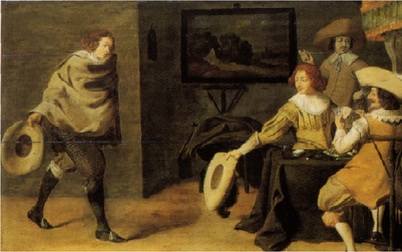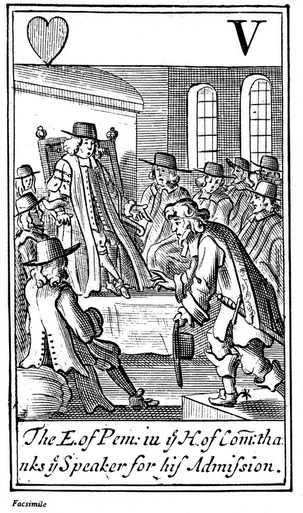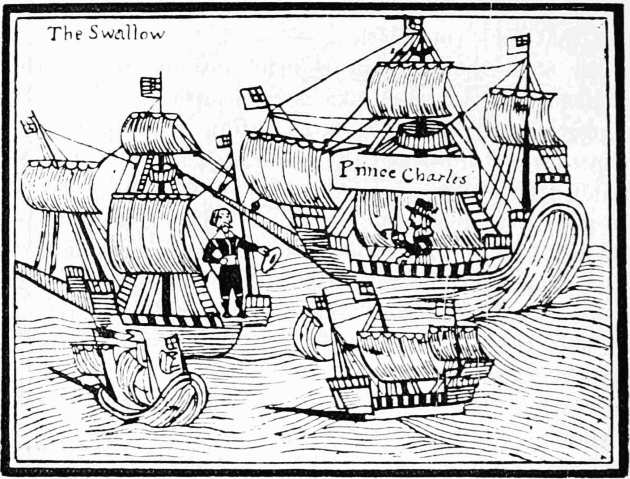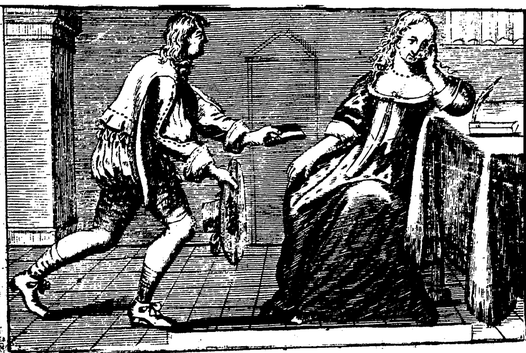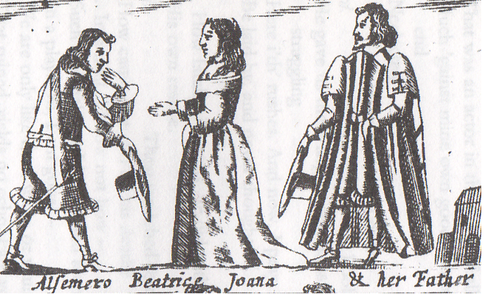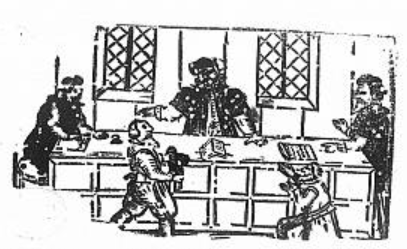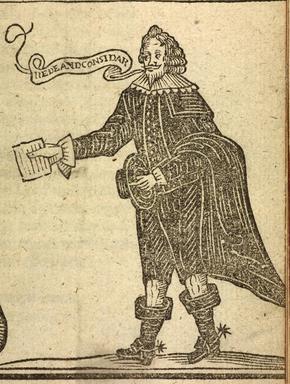A description of what might be termed the ‘early modern’ military salute is found in the 'New Art of War' (1740):
When the King or Captain General is being saluted, each Officer is to time his salute so as to pull off his hat when the person he salutes is almost opposite him.
This is plainly a guide for officers, but the formal doffing of the hat to a superior is the style of military salute adopted in our English Civil re-enactment. One question encountered in the Sealed Knot is which way up the hat should be held when saluting doffed: held with the inside turned downwards or with the inside turned uppermost?
From the following evidence it is clear that any hat doffed out of respect or in greeting (whether by soldier or civilian) should be held with the inside in plain view - a symbol of openness and honesty, and proof that there is nothing untoward concealed within.
When the King or Captain General is being saluted, each Officer is to time his salute so as to pull off his hat when the person he salutes is almost opposite him.
This is plainly a guide for officers, but the formal doffing of the hat to a superior is the style of military salute adopted in our English Civil re-enactment. One question encountered in the Sealed Knot is which way up the hat should be held when saluting doffed: held with the inside turned downwards or with the inside turned uppermost?
From the following evidence it is clear that any hat doffed out of respect or in greeting (whether by soldier or civilian) should be held with the inside in plain view - a symbol of openness and honesty, and proof that there is nothing untoward concealed within.
Few of these depictions are of military salutes, the Dutch painting of officers and the woodcut of the naval officer being the exception. All, however, show the hat being held with the inside in full view.
Most of the above pictures depict members of the seventeenth century upper society: gentlemen saluting gentlewomen or other gentlemen. The following woodcut is interesting, as it clearly show two hatless men in the presence of their social superiors. Would the social divide have required a more humble mode of greeting, and a different way of holding the hat?
Most of the above pictures depict members of the seventeenth century upper society: gentlemen saluting gentlewomen or other gentlemen. The following woodcut is interesting, as it clearly show two hatless men in the presence of their social superiors. Would the social divide have required a more humble mode of greeting, and a different way of holding the hat?
This ballad illustration of two fellows before a magistrate or a church court clearly shows the left-hand figure before the bench holding his hat with the inside towards him, in rather a servile manner. Whether this is out of deference due to a man of higher social rank (as a common soldier might salute in officer) is not certain. What is clear, however, is that it is clearly not being done in the manner of a salute – this is simply a man holding his hat.
This detailed illustration of an apothecary's 'dispensatory' also shows something of the social divide, with the younger man on the left (delivering a prescription) doffing his hat to the elder and more learned apothecary. The angle of the younger man's hat is rather awkward, but the position of his right hand on the brim, with the thumb across it, would suggest that the inside of the hat is, again, held toward the viewer. Interesting to note also that the salute is not returned by the apothecary, the higher-ranking of the two.
Occasionally there can be found pictorial evidence of a hat held with the inside concealed:
Occasionally there can be found pictorial evidence of a hat held with the inside concealed:
However, examples of this are much rarer in the sources researched for this (admittedly brief) study and, as such, should be taken as exceptions rather than as the rule.
In conclusion, it is clear that the oft-voiced opinion in The Sealed Knot, that the inside of a Civil War soldier's hat should be turned down when saluting so that the inspecting officer cannot see the hat’s dirty inside, would appear to be unsubstantiated by primary historical evidence.
Incidentally, the doffing of the hat in salute ended in the British army in 1745, with the following published order:
The men are ordered not to pull off their hats when they pass an officer, or to speak to them, but only to clap up their hands to their hats and bow as they pass.
(U.S. Quartermaster Corps museum website)
Robert Hodkinson,
June 2016
In conclusion, it is clear that the oft-voiced opinion in The Sealed Knot, that the inside of a Civil War soldier's hat should be turned down when saluting so that the inspecting officer cannot see the hat’s dirty inside, would appear to be unsubstantiated by primary historical evidence.
Incidentally, the doffing of the hat in salute ended in the British army in 1745, with the following published order:
The men are ordered not to pull off their hats when they pass an officer, or to speak to them, but only to clap up their hands to their hats and bow as they pass.
(U.S. Quartermaster Corps museum website)
Robert Hodkinson,
June 2016
Sources:
English Broadside Ballad Archive, University of California, Santa Barbara [website] [available: http://ebba.english.ucsb.edu/] [accessed 18/06/2016]'Origin of the Hand Salute', US Army Quartermaster Center and School [website] [available: http://www.qmmuseum.lee.army.mil/history/vignettes/respect1.html] [accessed 18/06/2016]
Rosen, J. Soldiers at Leisure: The Guardroom Scene in Dutch Genre Painting of the Golden Age. Amsetrdam: University Press (2011)
Mason, J. 'The Pictorial Press: Its Origin and Progress', Hellenica World [website] [available: http://www.hellenicaworld.com/History/MasonJackson/en/ThePictorialPress.html] [accessed 18/06/2016]
'What is the difference in the traditions of the outward palm and the palm down salute?' Quora [website] [available: https://www.quora.com/What-is-the-difference-in-the-traditions-of-the-outward-palm-and-the-palm-down-salute] [accessed 18/06/2016]
English Broadside Ballad Archive, University of California, Santa Barbara [website] [available: http://ebba.english.ucsb.edu/] [accessed 18/06/2016]'Origin of the Hand Salute', US Army Quartermaster Center and School [website] [available: http://www.qmmuseum.lee.army.mil/history/vignettes/respect1.html] [accessed 18/06/2016]
Rosen, J. Soldiers at Leisure: The Guardroom Scene in Dutch Genre Painting of the Golden Age. Amsetrdam: University Press (2011)
Mason, J. 'The Pictorial Press: Its Origin and Progress', Hellenica World [website] [available: http://www.hellenicaworld.com/History/MasonJackson/en/ThePictorialPress.html] [accessed 18/06/2016]
'What is the difference in the traditions of the outward palm and the palm down salute?' Quora [website] [available: https://www.quora.com/What-is-the-difference-in-the-traditions-of-the-outward-palm-and-the-palm-down-salute] [accessed 18/06/2016]
